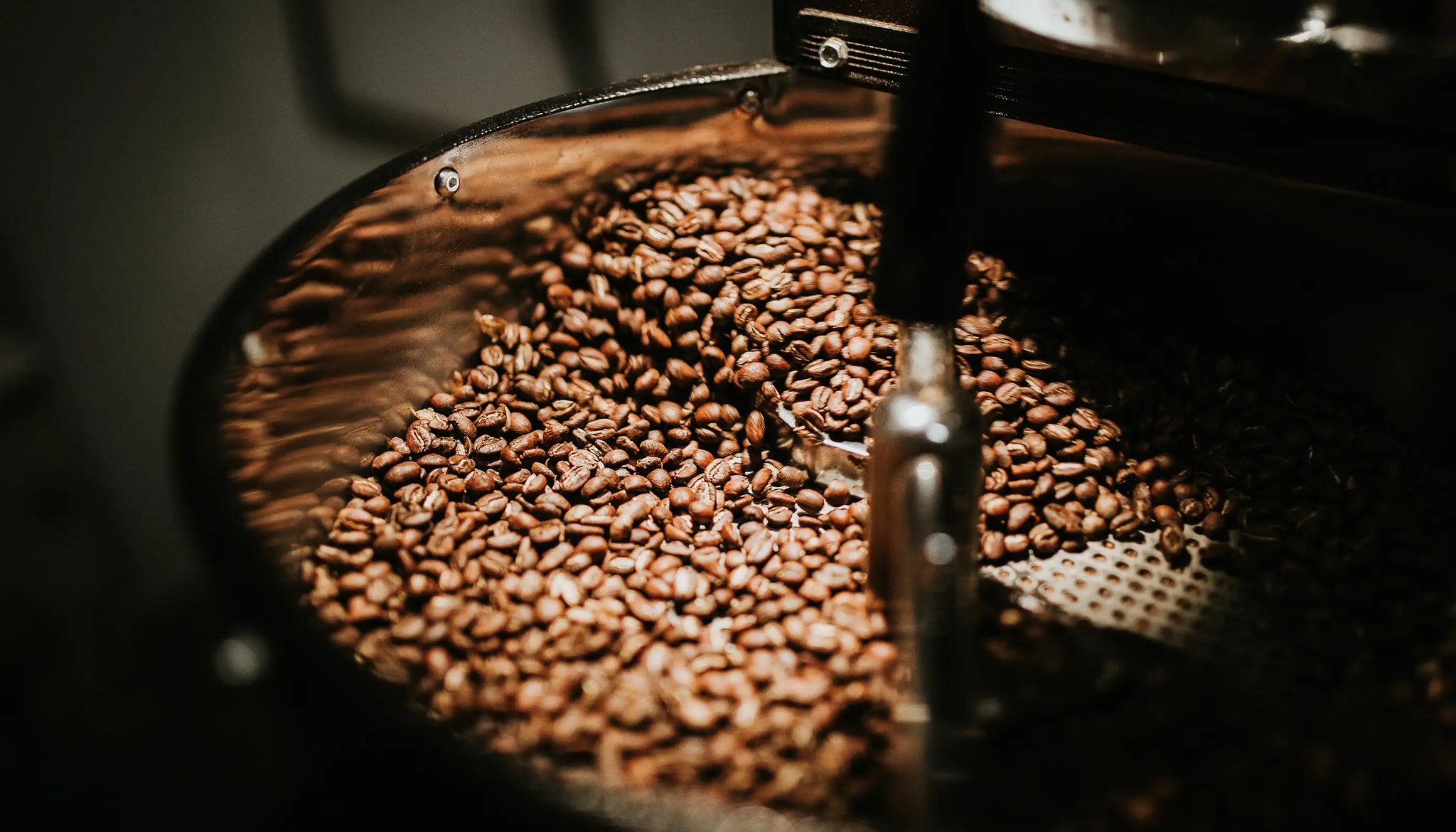SOE Single Origin Espresso – Ideal for Precision Brewing Methods
SOE Single Origin Espresso – Ideal for Precision Brewing Methods
Blog Article
Exploring the Abundant Tastes of Coffee Beans: a Deep Study Espresso and Blended Coffee Beans
When you check out the rich tastes of coffee beans, you discover a complicated world where each selection brings its own character to your mug. As you navigate via the art of espresso and the creativity behind combined coffees, you'll begin to value the subtleties that make each sip unique.
The Beginnings of Coffee Beans: Checking Out Terroir and Flavor Profiles
When you take a sip of coffee, you're not simply appreciating a beverage; you're experiencing a rich tapestry of flavors formed by the beans' beginnings. Each region generates special flavor profiles affected by soil, environment, and elevation. For circumstances, beans from Ethiopia commonly break with brilliant, fruity notes, while those from Colombia have a tendency to use a balanced, nutty sweetness.
As you discover various origins, you'll discover exactly how terroir-- the environmental variables impacting a crop-- plays an important function - Single Origin Espresso. The very same coffee selection can taste significantly different depending upon where it's expanded
When you take into consideration these variables, you begin to appreciate the intricacy behind your mug. Each sip narrates of the land and the farmers who supported the beans. So, following time you delight, think of the trip your coffee took prior to it reached your hands, and savor those elaborate tastes that mirror its beginning.
Comprehending Espresso: The Art and Science Behind the Brew
When you consider coffee, it's not practically the solid flavor; it's likewise regarding the strategies that bring it to life. Understanding how different preparation approaches influence preference can change your developing experience. Let's check out the intricacies of espresso preparation and discover the one-of-a-kind taste accounts that make each mug unique.
Coffee Prep Work Techniques
Coffee preparation is both a science and an art, incorporating exact methods with a deep understanding of coffee. To start, you'll wish to select high-grade, fresh roasted beans and grind them finely for ideal removal (Single Origin Espresso). The grind size is essential; as well coarse, and your coffee will certainly be weak, too great, and it'll be bitter
Following, tamp the grounds evenly in the portafilter to assure uniform extraction. When you secure it right into the device, aim for a brewing temperature level in between 190 ° F and 205 °
F.As you draw the shot, look for the best extraction time-- around 25-30 seconds. The result ought to be a rich, luscious espresso with a stunning layer of crema on top. With practice, you'll understand these methods.
Flavor Accounts Explained
The world of espresso supplies a rich tapestry of taste accounts that can elevate your coffee experience. Light roasts usually showcase intense acidity and lively tastes, while dark roasts present much deeper, bolder tones.
Understanding these profiles helps you pick the right espresso for your palate. Trying out various blends can disclose surprising combinations. For circumstances, a well-crafted mix might harmonize the brilliant notes of an Ethiopian bean with the abundant, chocolatey touches of a Brazilian bean. Welcome the trip of discovering espresso's varied flavors, and you'll transform your coffee ritual into an interesting journey.
Processing Approaches: Exactly How They Influence Flavor and Fragrance
While it may seem that the beginning of coffee beans is the most significant consider establishing their flavor and aroma, the handling techniques used post-harvest play a just as necessary function. You'll find that these approaches can dramatically alter the final preference profile of your mug.
As an example, the washed process gets rid of the fruit from the beans before fermentation, often causing a cleaner, brighter flavor. The all-natural process leaves the fruit undamaged during drying out, resulting in a sweeter, fruitier account.
Other approaches, like honey processing, strike an equilibrium, allowing some fruit mucilage to continue to be, offering an unique complexity.
Each handling method connects with the beans' fundamental features, improving or silencing specific flavors and aromas. So, when you sip that coffee or blended coffee, keep in mind that the trip from cherry to cup is influenced not simply by origin however additionally by how those beans were processed.
Roasting Methods: Opening the Complete Potential of Coffee Beans
Roasting strategies are important for exposing the full capacity of coffee beans, as they change raw, environment-friendly beans right into the fragrant, flavorful coffee you take pleasure in. The selection of toasting method-- light, medium, or dark-- substantially influences taste profiles.
You can trying out roasting temperature levels and times to find your ideal brew. A slower roast at lower temperatures visit their website permits intricate tastes to create, while a quicker roast can escalate anger. Take notice of the fractures during roasting; the initial split shows a light roast, while the second crack signals a dark roast. By mastering these methods, you'll expose a world of taste, boosting your coffee experience to new heights. Enjoy every sip, recognizing the treatment that entered into your cup!
The Magic of Blended Coffee: Creating One-of-a-kind Flavor Experiences
Developing an one-of-a-kind taste experience with blended coffee can change your morning routine into an exploration of preference. By combining various beans from different regions, you can disclose a symphony of tastes that elevate your mug to new heights. Each mix offers a distinct account, balancing sweetness, level of acidity, and body to develop something genuinely special.
When you pick a mix, you're not just picking a coffee; you're choosing a journey throughout diverse landscapes and societies. Explore different mixes permits you to discover your individual favorites, whether you delight in fruity notes or abundant, chocolatey undertones.

Tasting Notes: Acknowledging the Subtleties in Your Cup
As you sip your coffee, you may notice a spectrum of tastes dancing on your taste buds, each revealing the complexities of the beans. You might taste the bright acidity similar to citrus or the deep, abundant notes comparable to dark delicious chocolate. The sweetness could evoke honey or caramel, balancing the general account beautifully.
Take notice of the body of the coffee-- does it really feel light and ventilated, or is it full and creamy? The finish, as well, uses ideas; a sticking around aftertaste might mean nuttiness or flower touches.

Don't forget to explore the unique characteristics of various beginnings, as each region passes on distinct tastes - Single Origin Espresso. Ethiopian coffees commonly existing fruity notes, while Colombian beans may showcase an extra spherical sweet taste. By acknowledging more helpful hints these nuances, you'll deepen your appreciation for each and every mug, elevating your coffee experience to new elevations

Brewing Methods: Making The Most Of Flavor Removal for each Bean
When you explore the numerous brewing methods, you'll uncover that each method can considerably impact the taste profile of your coffee. From French press to pour-over, each approach essences different substances, improving or muting details notes. For instance, using a French press permits oils to stay in the mixture, producing a richer taste, while pour-over stresses clearness and brightness.
Temperature and grind dimension likewise play essential duties. A coarser grind works best for cool brews, while a great grind is suitable for espresso. Exploring with water temperature-- between 195 ° F and 205 ° F-- can disclose covert tastes, too.
Do not forget soaking time; a quick removal can bring about sour notes, while over-extraction may generate bitterness. By readjusting these variables, you can make best use of flavor extraction and genuinely boost your coffee experience. Delight in the trip of discovering what technique ideal suits your taste!
Frequently Asked Concerns
What Is the Perfect Water Temperature for Brewing Coffee?
The excellent water temperature for brewing coffee's in between 195 ° F and 205 ° F. If you make use of water that's too warm, you'll over-extract flavors; also cool, and you won't draw out enough. Aim for that wonderful area for the very best mixture!
How Does Grind Size Impact Coffee Taste?
Work dimension substantially influences coffee taste. Better grinds remove a lot more oils and tastes, causing a bolder preference, while coarser grinds return a lighter taste. Changing work dimension assists you accomplish your preferred coffee profile.
Are There Health And Wellness Perks Linked With Alcohol Consumption Coffee?

What Is the Distinction In Between Arabica and Robusta Beans?
Arabica beans are smoother and sweeter, commonly featuring fruity flavors, while robusta beans are stronger with a bitter taste and greater high levels of caffeine web content. You'll see these differences in aroma and developing experience.
Just How Can I Shop Coffee Beans for Quality?
To keep coffee beans for freshness, maintain them in an impermeable container, far from light, moisture, and warmth. If you only grind what you need right before developing., you'll keep their taste longer.
Discovering the Abundant Flavors of Coffee Beans: a Deep Dive Into Espresso and Blended Coffee Beans.
When you check out the rich tastes of coffee beans, you discover a complex globe where each selection brings its own personality to your mug.When you take a sip of coffee, you're not just delighting in a beverage; you're experiencing an abundant tapestry of flavors formed by the beans' beginnings.Roasting methods are vital for revealing the complete capacity of coffee beans, as they transform raw, green beans right into the fragrant, tasty coffee you enjoy.As you drink your coffee, you might observe a spectrum of tastes dancing on your palate, each disclosing the intricacies of the beans.
Report this page